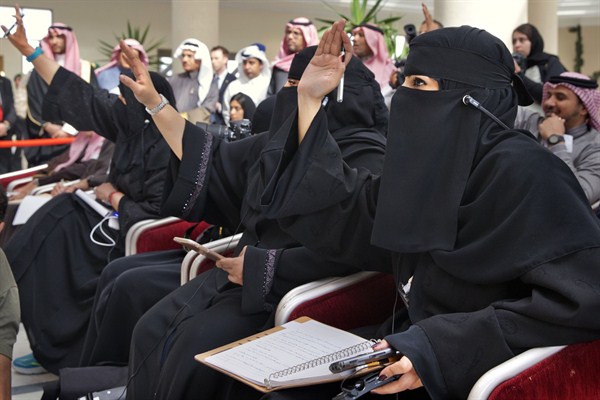The status of women in traditional Muslim societies, particularly Saudi Arabia, has long been an awkward source of cultural and political tension between the West and the oil-rich monarchies of the Arab world. Women’s roles are gradually changing as these states modernize, but more disruptive social change could well occur within a generation, as larger cohorts of educated women succeed in challenging social norms.
Gender issues have been at the margins of U.S. relations with the Arab world for decades, and the mantra inside Western bureaucracies more generally has been that each society changes at its own pace. But while no Western country made gender issues a priority in its relations with key Arab states, the U.S. has quietly supported educational and economic programs that provide access for women who are hidden and held back in these strongly patriarchal societies. Meanwhile, human rights and development experts worked diligently to support Arab women trying to change their systems from within.
Journalists and novelists have increased our understanding and insight into the predicaments of women in Arab societies and their uneven opportunities for change. Just a few days ago, New York Times reporter Mona al-Naggar—a remarkable video journalist who has chronicled the hajj, U.S. prisons and the so-called Islamic State in her work—shared blog posts from Saudi women on their experience with the country’s restrictive gender laws and customs. Their responses run the gamut from deep despair at the requirement to have a male relative or guardian approve many activities and decisions, even for highly educated women, to those who defended the paternalism, perhaps out of patriotism or loyalty to those fathers and husbands who have progressive views. In her 2007 novel, “The Girls of Riyadh,” Rajaa Alsanea also provided a provocative window into the secret world of Saudi females navigating the strict rules regarding their presence in public space and the deeper emotional and psychological impacts of those restrictions.

